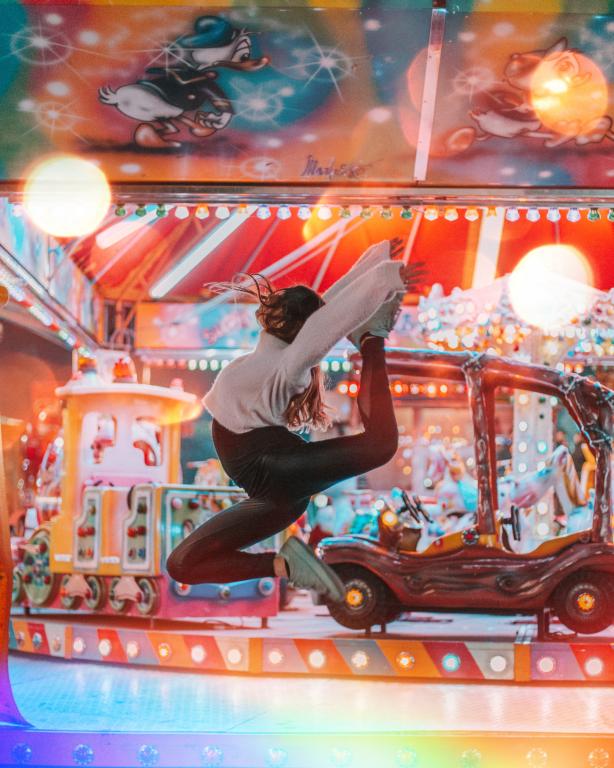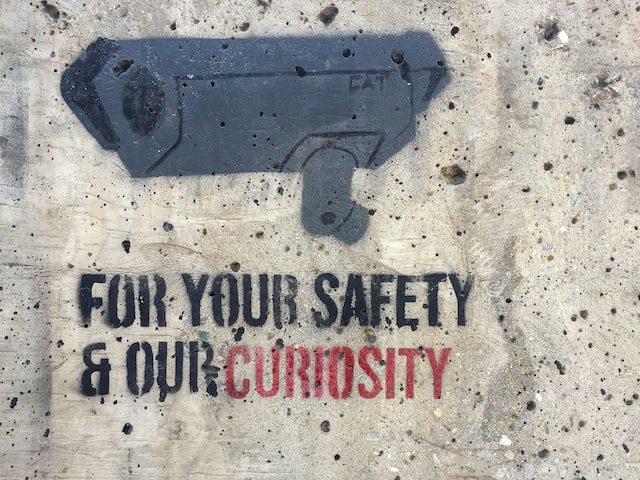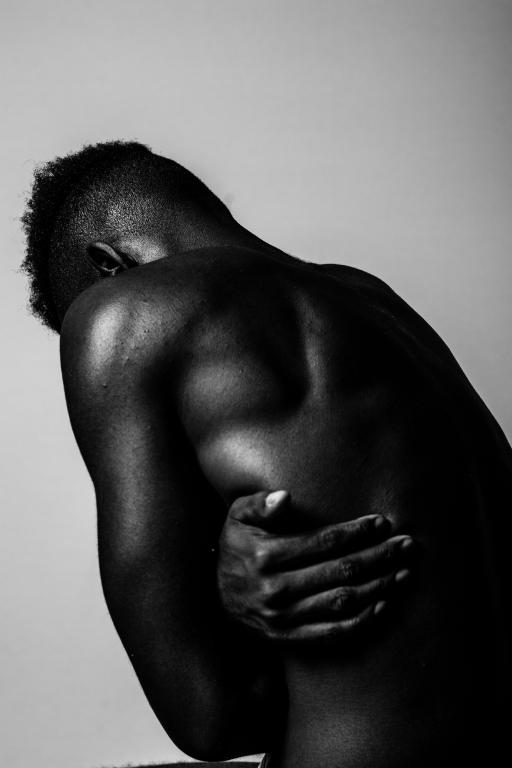
We see what we want to see. So, when we see images like a Netflix promotion for a new film, we decide in mere seconds whether the film interests us, or not. If the image conjures discomfort or shame, we react to it accordingly. If the image conjures curiosity, we respond to it.
In many regards, we do that with people as well. We look them up and down, and within seconds, we can determine how we will treat a person based on what they look like. Depending on how they are dressed, we will form an idea about what kind of person they are. We do this to make sense of the visual stimulation that overwhelms our sight, we translate an image to a language that we understand and use to distinguish. In our society, we also attach a moral judgment to that translation: good or bad, right or wrong, acceptable or inappropriate, etc.
I remember seeing the “Mignonnes” (“Cuties”) promotion pop-up when I opened my Netflix app. I remember quickly scrolling down to remove that blatant image off my screen because my kids were in the room. I participated in a few dialogues that condemned the image along with the Netflix decision to use that image. I had seen enough from the commentary of others who had seen the movie to know that I didn’t need to see it in order to criticize it. So, I judged it, and then I dismissed the movie and the topic altogether.
While I was preparing for a podcast recording, I visited the Twitter feed of my upcoming guest, Dr. David J. Ley. He’s internationally known for his expertise in sexuality and mental health. He’s authored several bestselling books and his widely controversial stance on sex and porn addiction has made him infamous in the psychology community. Put bluntly, when it comes to sex, Dr. Ley knows his shit. So, when I noticed that he stepped into the “Cuties” controversy, I was surprised and taken aback by his position on the topic. Naturally, this was the first topic I chose to engage in for the episode. Dr. Ley obliged and shared his views.
After the dialogue about the movie, I decided to watch it for myself. I won’t lie, I was hesitant to watch it. Would I be contributing to viewing child pornography? If I gave Netflix another view on the roster, would that mean that I somehow approve of pedophilia? Was I paying to put profits over the safety of children? I had heard it compared to soft-core porn.
Here’s the synopsis of “Cuties”, from Wikipedia:
Eleven-year-old immigrant girl Amy, originally from Senegal, lives with her mother Mariam in one of Paris’s poorest neighbourhoods. In an apartment along with her two younger brothers, she waits for her father to rejoin the family from Senegal. She helplessly witnesses the suffering of her mother, whose polygamous husband is preparing to return from the country with a second wife. She is also bored during prayer and more generally of the religious values that her aunt seeks to transmit to her.
Things turn swiftly, as Amy is fascinated by her disobedient neighbour Angelica’s twerking clique called Cuties, an adult-style dance troupe which has contrasting fortunes and characteristics to Mariam’s religious customs, values and traditions. The pre-teens practice for a competition and do not hesitate to adopt revealing outfits in the image of their older competitors. Encouraged by success and the quest for recognition on social networks, suffering from her own family situation, Amy plays the one up and incorporates gestures of quasi-pornographic videos in the choreography.
Following a humiliation at school, she loses her footing and sends a compromising photo of her vagina on social networks, which causes her to be rejected by her classmates. Following a quarrel with the rest of the Cuties, they ban her from performing with them at the dance contest. While her father’s wedding is on the same day as the final competition at Parc de la Villette, she is determined to dance with them. Sneaking out of the house in her dance outfit, she pushes another member of the Cuties, Yasmine, into a lake, so that the Cuties have no choice but to allow her to dance with them. The highly suggestive dance routine shocks the audience. Amy bursts into tears before the end of the performance and leaves to join her mother. Upon her return, she runs into her aunt who blames her for her outfit and recent attitude. Amy’s mother intervenes by telling her to leave her daughter alone and then hugs her to reassure her. Amy implores her mother to allow Amy to not attend the wedding, in order to demonstrate her disapproval. Amy’s mother permits her to not go, but states that she herself must go to fulfill her duty as a wife. Amy then abandons both the traditional wedding dress and her sexy dancer’s outfit, and, in jeans and a t-shirt, her hair down, she goes out to play jump rope with a group of girls.
I watched this movie with a lens of openness as best I could. Many overarching themes were present, primarily rebellion of religious fundamentalism, but also transitioning from girl to woman as marked by menses. And then we have the obvious overtones of how societal sexual standards for women have trickled down and impacted our youth.
So many scenes of the movie brought back memories from my childhood. I recall a time when I noticed other girls were revealing more skin than I could. I remember how awkward I felt being one of the only girls to not develop breasts over the summer. There are so many cringe-inducing scenes in the movie that resonated with me and brought up a lot of old wounds, confusion, and even embarrassment. I recall the days I watched other girls dance sexier than I did at school dances. I even remember asking myself back then, “Did their mothers know they danced like this?” I was that girl, at home, practicing dance moves in front of the mirror. It’s funny that the dancing resonated so deeply with me because that seems to be what hits the wrong note for everyone else.
Dance scares us, apparently. Dancing means something, right? Look back to as far as February, we were collectively conflicted after watching the Half Time show. It was the dancing that compelled me to defend the outrage over Jennifer Lopez and Shakira’s performance. Pole dancing? In front of children? With children in cages? Where was the warning?? Then fast-forward to last month when Cardi B.’s WAP compelled Ben Shapiro to voice his concern over lubrication that required mops and buckets for clean-up. Female + tight clothing + music + dance = depravity, sin, and a call for social orgasmic outrage.
So, what does dance mean?
Dance is an artistic expression of love and sex. Isn’t it? Isn’t that what we are concerned about? That these young girls are expressing sexualized movements in a way that their cognitive capacity just cannot handle. I agree with that premise. As adults, we are keenly aware of how our movements imitate our bodily entanglements when we are having sex. Those girls don’t understand that, do they? They just see videos and imitate moves and steps. They see how many likes a certain video gets and they want that kind of attention. But they don’t understand the intention of that attention.
Many Christians felt similar when yoga started trending in the United States. Still yet, many currently hold this view. Yoga has been tied to devil worship, said to elicit salacious thoughts in men, viewed as idol worship—sacrificial offering to many gods versus one God. Minimal, tight clothing coupled with weird music, heavy breathing, and movements that mirror sexual positions—all these components together are just too much for our adult brains that are wired for sex. Isn’t that odd to you? What does that say about the lens that we apply when we are viewing dance, yoga, or any kind of movement that seems to praise the way the body works? Why do we apply a sexual lens? Is yoga really about sex? Is dance really about sex?
Maybe not all dance = sexual expression. I mean, that can’t be the case given the multitudes of [Christian] children enrolled in dance performances across this country alone. Somewhere, we’ve defined dance as an exercise, an art, a way to stay socialized, a way to get a scholarship for college, to model collaborative, team efforts, and more. So, we don’t all have that takeaway when we see young girls in tight clothing, dancing in front of crowds. Nor do all Christians fear that yoga is a gateway to lust and eternal damnation. The difference lies in the context of the action and the lens that we apply to view it.
But often, we would rather allow someone else to tell us what to think of, well, anything. It saves us time when we allow others to think for us, and at the same time, gives us just enough information to pick a side and opine on the topic. And if that works for you, so be it. Let someone else think for you. Lord knows we have too much information to process in the first place.
But what if the person thinking on our behalf has an unhealthy view of what they are judging? What do we perpetuate then? In this instance, I would want to know that a person judging this movie has an overall positive and healthy view of sexuality. And by healthy, I mean a view that doesn’t utilize shame, humiliation, or blame as a way to condemn the natural, God-given image of my body, or its functions, nor its capacity for pleasure or agility.
If the criticism is coming from the view that believes the body is sinful, or disgusting, or a perversion as a consequence of “the Fall”, I want nothing to do with that angle. More so, I want to be challenged in my own views. I want to be befuddled by information in a way that I acknowledge I don’t really know as much as I think I do. Prior to watching the movie, I thought I had enough information to judge it freely. After hearing from someone I admire and respect offer his views, I realized I judged it too harshly. I judged it without knowing the context of the movie. For me, this was a contradiction to my own values. I value context. Context is everything. Context makes the greatest difference in every instance. Without it, we are ignorant, intentionally.
Dance may be an expression of sexuality, of love, of feelings of desire and attraction. But dance can also be a way that we just let our bodies move freely to release whatever restricts us. Moving our bodies doesn’t always have to be compared to something sexual, albeit whenever a female seems to bring enough attention to movement, many are quick to block it out and call it precisely that: sexual. But dance is also a beautiful way to feel how our body works and what it has the capacity to do. And anyway, when do we ever hear about the fears of what sports do to young boys and their views of their bodies? Aren’t their tight pants sexualizing their bodies? Aren’t we exploiting young boys by forcing them to manipulate and over-exert their strength and agility?
I see that Amy (the main character in “Cuties”) sought after dance as a way to rebel against her religion. Also, as a way to embrace her entrance into womanhood. She could have used dance as her escape from the burden of her foreseeable destiny in which she would soon become an older man’s bride. I see Amy coming to an understanding that what she thought she wanted wasn’t really what she wanted, nor was it what she got. I see a young girl coming to terms with seeing her sexuality separate and wanting to integrate it, but not knowing how. I see that because I struggled with that as a child.
If we don’t approve of the way “Cuties” portrayed reality, what are the ways that we can address what is taking place without completely deleting all access to sexual education? How should we instruct our young girls on sexual expression? If our lens over dance is sexual, do we need to ensure our children have sex education prior to entertaining dance as an extra-curricular activity? Do we need to go to the Footloose and ban dance and music altogether? Should we have age restrictions on dance competitions? Should we all wear veils and full-body coverings? How do we correct this? Is this a wake-up call for parents with the blatant confrontation that our children can so easily get away with so much?
The sad, harsh reality is that, while we may not have approved of the manner in which this information was presented to us, it’s a piece of truth that we can no longer deny. We say that we want transparency. We demand that we be given the truth. Now we have the truth, in a raw, unrefined form that convicts us in the cruelest of senses, by visual stimulation and confrontation, and with children. Do we cover it back up, shove it under the rug, and hold the shield over the eyes of our children while singing “Nothing to see here, my dear, nothing to see here”? Are we begging to be brought back into the dark even if it contradicts our demands to be shown the light?
We see what we want to see, don’t we? Or do we see what we have been programmed to see? Do we see what makes us comfortable in our own beliefs? Do we see what shows us to be right? Do we want the naked truth, or do we want to the cloaks of false security?
So many questions remain unanswered. The truth will come out, eventually, and in many pieces. A conversation is the only way we will arrive at any positive solution.












